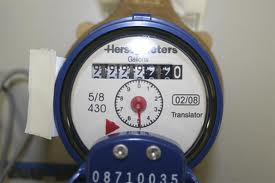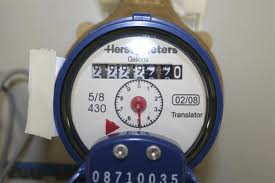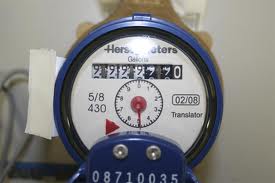Three Photos Every Inspector Should Include at the End of the Report
by Nick Gromicko, CMI® and Kate Tarasenko
As a home inspector, you never want to be accused of failing to note a water line leak, or -- worse -- causing water damage because you forgot to turn off a fixture. One way you can prevent this is to take some photos of the water meter just prior to leaving the property.
Of course, in some jurisdictions, the water meter is below ground or requires a key and so is not readily accessible. Other water meters are inaccessible due to the weather, overgrown foliage, or because they aren't properly maintained by the utility company. In these cases, it will be difficult, if not impossible. to obtain any photos. But you should alert your client to the fact that they are entitled to be able to read their water meter in order to reconcile its readout with their monthly water bill, so they should either rectify the problem themselves, or complain to the appropriate party to get the situation rectified.
Assuming you have safe access to the water meter, take these photos after you've:
- completed your home inspection;
- turned off all the sink and tub faucets after checking them for functional flow; and
- made sure that the washing machine, dishwasher, sprinkler system, and any other water-using systems, devices and fixtures are off.
Take three photos of the water meter that show that no water lines are leaking, assuming you didn't find any.
Here are the three photos to include sequentially at the end of your inspection report. Of course, the photos should show that the water meter is actually not running.
Here are the three photos to include sequentially at the end of your inspection report. Of course, the photos should show that the water meter is actually not running.

This is the first photo that demonstrates that the water meter is not running.
This is your baseline photo.
This is your baseline photo.

This second photo shows that the meter is still not running.

This final photo, showing that the water meter is still not running,
confirms that there are no hidden and undiscovered water leaks in the house,
and that the inspector didn't leave any faucets running anywhere.
confirms that there are no hidden and undiscovered water leaks in the house,
and that the inspector didn't leave any faucets running anywhere.
It's best if the photos are actually time-stamped and show several seconds between each shot. Since some cameras don't come with this feature, take each photo from a slightly different angle to show that they are, in fact, different. But make sure that the meter's display can be viewed--the angle shouldn't distort the reading.
Of course, if these photos show that the meter is still running, you have cause to recommend to your clients that they have the plumbing system checked out by a licensed plumber, warning them in advance that the leak is apparently hidden somewhere behind a wall, ceiling or floor, and so was beyond the scope of your home inspection. But take the opportunity to remind them that by performing this extra step--which most home inspectors wouldn't even think of to do--you have been able to notify them about a problem that should be immediately addressed before it would have become an expensive disaster.
Providing these photos at the end of your inspection report also teaches your clients a simple home-maintenance tip. By comparing the meter readings for the first few months, they can monitor their family's average water usage, and they can be alerted to any unexpected surges that may indicate a leak in the plumbing system.
Performing this small but important step will also allay some of the anxiety that your clients may be experiencing, and this sort of empathy can translate into positive feedback that you can solicit by giving them a Customer Satisfaction Survey with your report or with a free copy of Now That You've Had a Home Inspection. You can then use their positive feedback in your business marketing--on your website and in your brochure. Always remember that marketing on the job is part of the job, and everything you do reflects on your business.

